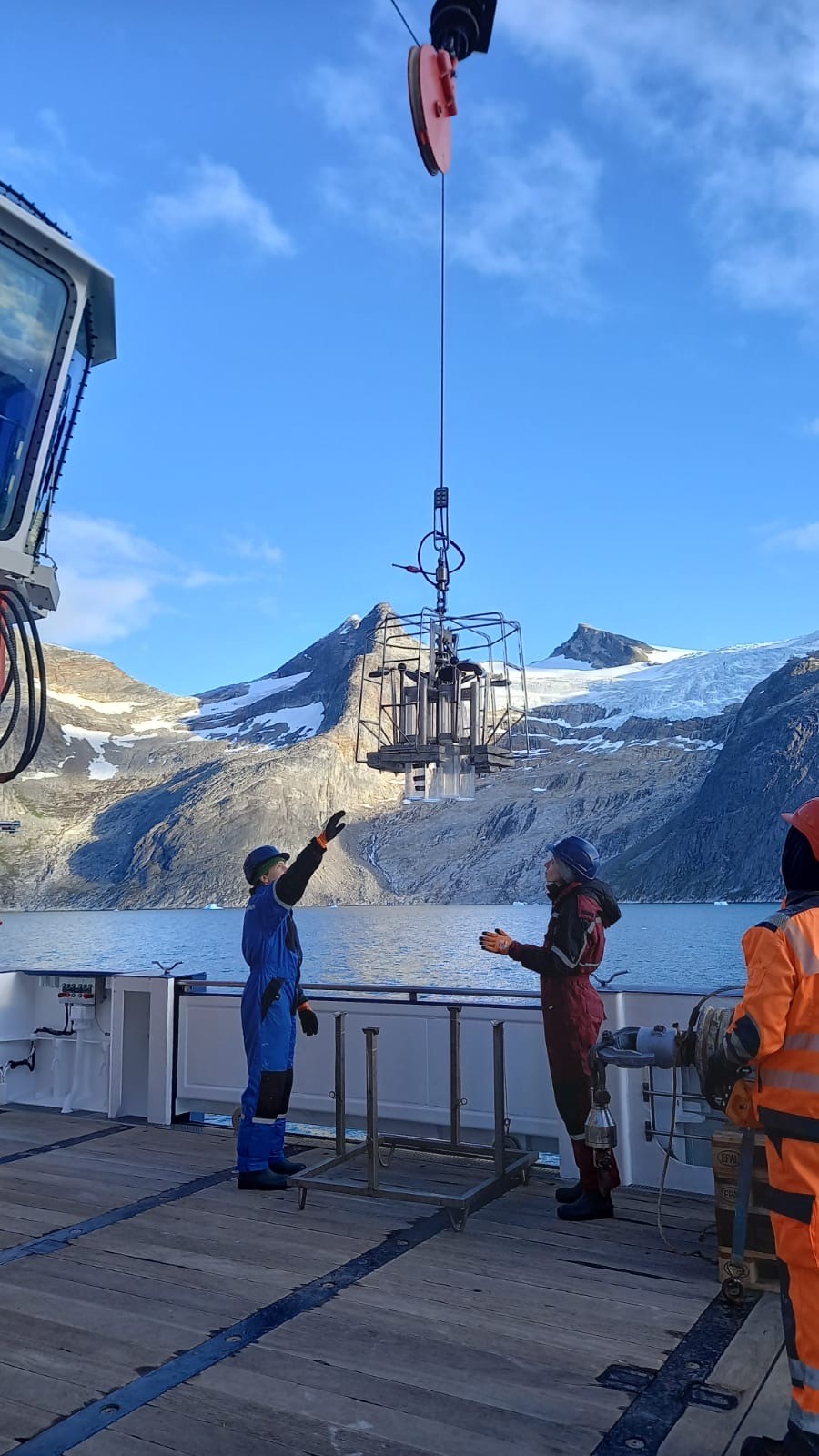
Aluu (Greenlandic for “Hello”) from the other coring team! We are three researchers from the Geological Survey of Denmark & Greenland and our work is all about mud. Not any mud though, only the finest and oldest from the seafloor of East Greenland’s fjords.
You may wonder: why should one look at mud if we have such wonderful devices to analyze every detail of the water above it? The answer is (as so often in science): it gives us a different perspective. In a fjord, the mud that makes up the seafloor contains traces of organisms that can tell us how terrestrial landscapes, glacial ice, and marine waters have interacted over thousands of years.
While the top layer of the seafloor is alive and sometimes teeming with critters such as tube worms, less and less living organisms are found in the deeper layers. As we go deeper, we find older material, which we can use to answer questions such as: How did the retreat of glaciers in the past affect the species living in the fjord?
To access mud from the seafloor, we brought two special toys with us: the multicorer a.k.a. MUC and the gravity corer. The MUC looks a bit like a space capsule and with its four tubes, it is ideal for retrieving the upper 25 cm. This part of the sediment is alive and the species we find represent today’s conditions. To look back further in time, we need to go deeper by retrieving longer cores. For this purpose, we also brought the gravity corer with which we can retrieve much longer sediment cores (up to 5 m!). At 5 meters depth, the sediment can be up to 12,000 years old!
If you are curious about how our first “coring” went and what we found so far, stay tuned!
Heike, Inda and Lennart